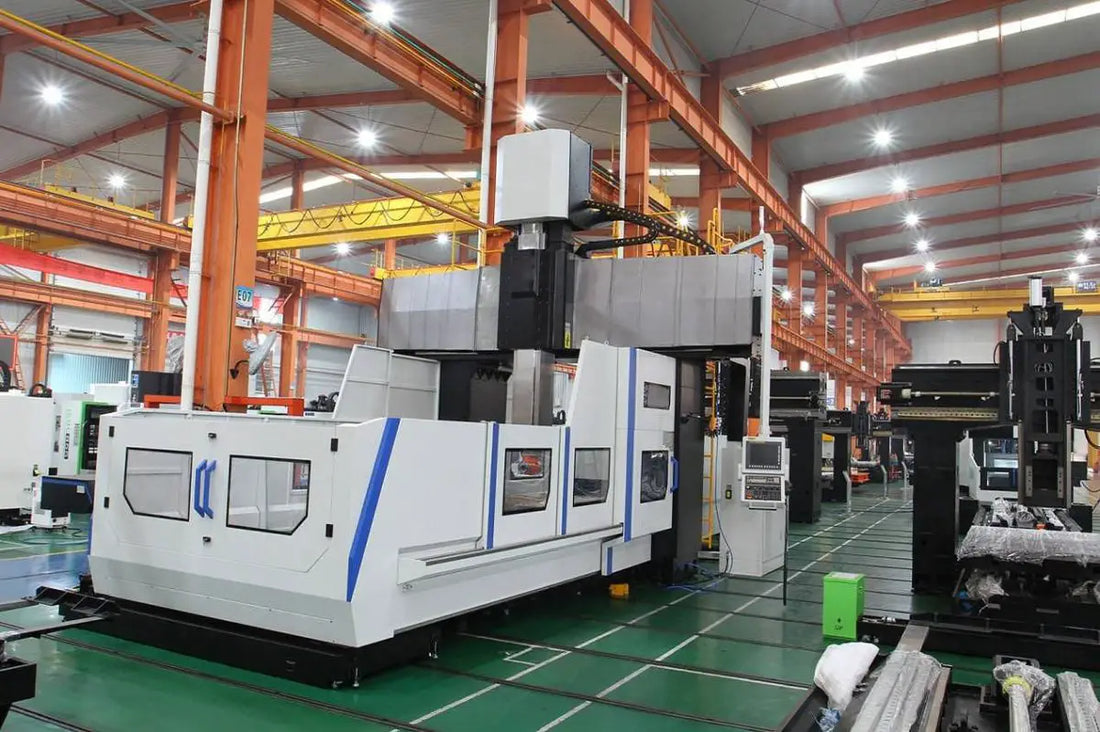Brief explanation of CNC machines
Numerical control (NC) technology is a machine tool control technology developed in the mid-20th century. NC is an automatic control technology that uses digital signals to control the movement and machining process of machine tools.
An NC machine tool is a machine tool that uses NC technology, that is, a machine tool equipped with an NC system. It is a typical electromechanical integration product that comprehensively applies advanced technologies such as computer technology, automatic control technology, precision measurement technology, communication technology and precision mechanical technology.
The Fifth Technical Committee of the International Federation of Information Processing (IFIP) defined NC machine tools as machine tools equipped with program control systems that can logically process programs specified by specific codes and other symbol encoding instructions.
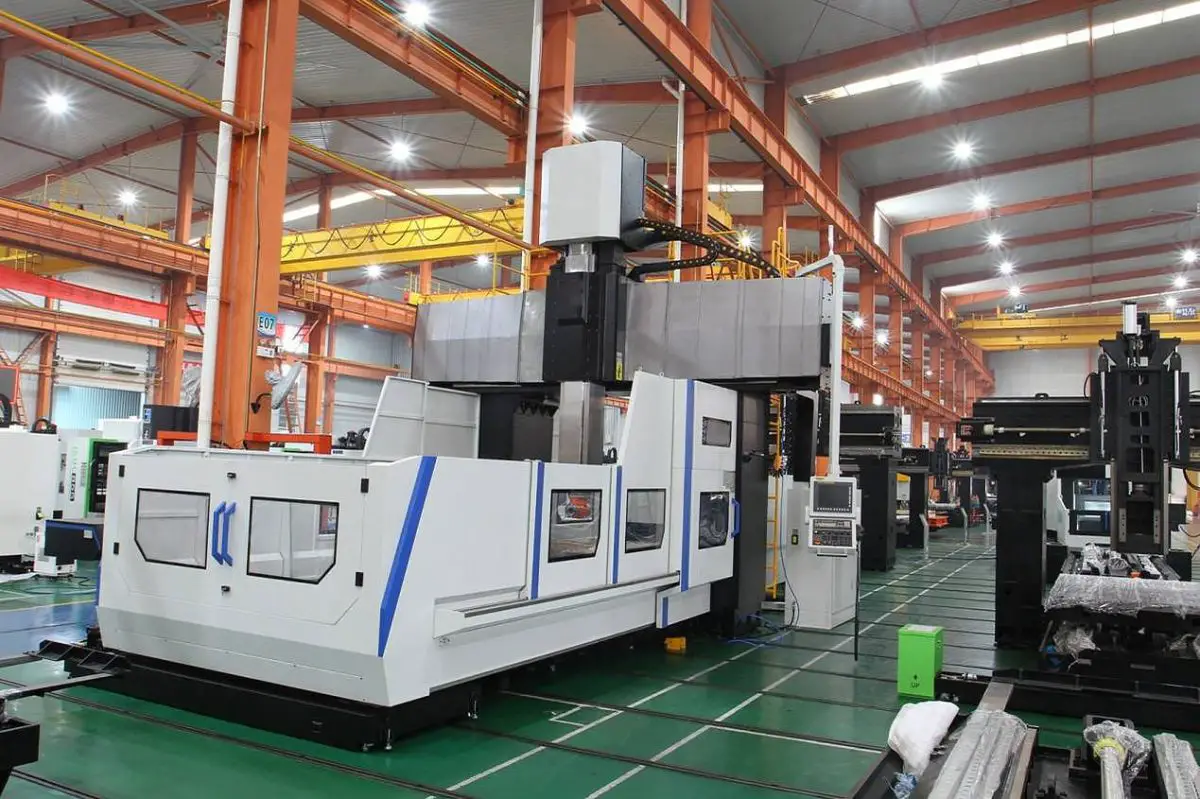
Importance of CNC machines in modern manufacturing
With the continuous progress of social production and science and technology, various new industrial products emerge one after another.
The basis of national industry, the mechanical industry produces increasingly precise and complex products. Especially in areas such as aerospace, navigation and military, the mechanical parts required have higher precision, more complex shapes and generally have smaller batch sizes. Processing such products requires frequent modifications or adjustments to equipment, which ordinary machine tools or highly specialized automated machine tools are clearly not capable of meeting.
Meanwhile, with the increasing intensity of market competition, production companies urgently need to further improve production efficiency, product quality and reduce production costs.
In this context, a new type of production equipment emerged – numerical control (NC) machine tools. It comprehensively applies various technical achievements such as electronic computers, automatic control, servo drives, precision measurement and new mechanical structures, forming the basis of the future mechanical industry and indicating the development direction of mechanical manufacturing industry equipment.
History of CNC Machines
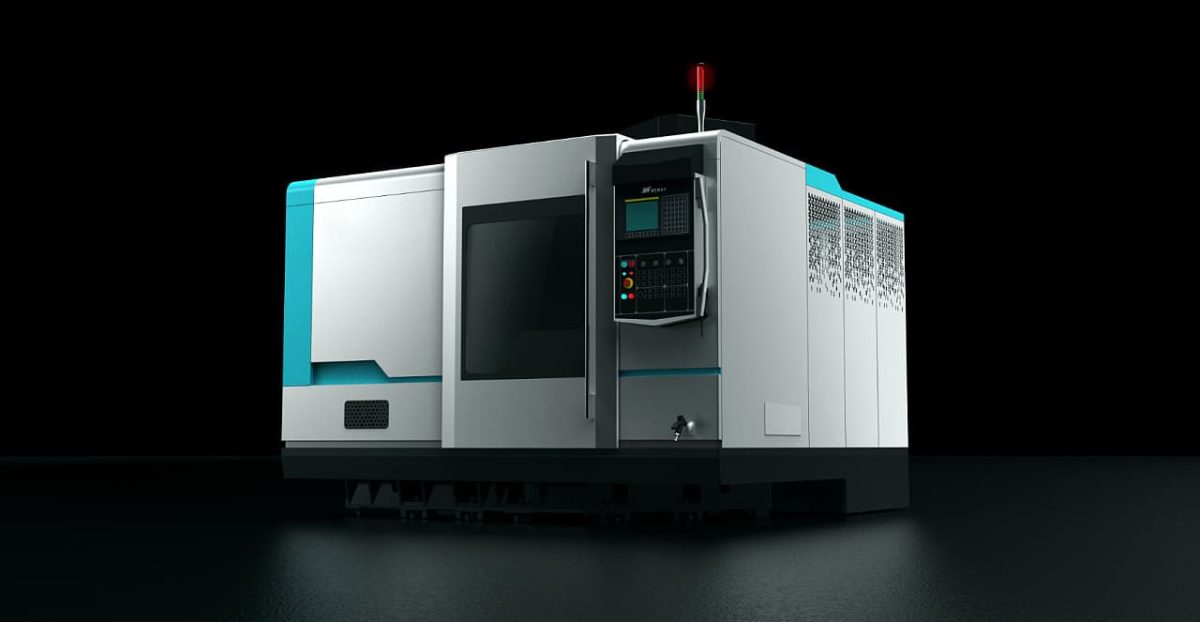
The emergence of CNC machine tools.
The development of numerical control (NC) machine tools began in the United States. In 1948, Parsons Co. completed a task to manufacture sample check plates for contouring helicopter propellers and proposed the initial concept for developing NC machine tools. In 1949, with the support of the US Air Force Logistics Department, Parsons Co. officially accepted the commission and cooperated with the Servo Mechanism Laboratory of the Massachusetts Institute of Technology to begin the development of NC machine tools.
After three years of research, the world's first experimental NC machine tool prototype was successfully developed in 1952. It was a milling machine that used a linear interpolation three-coordinate continuous control system based on the pulse multiplier principle. The entire NC system used electronic tube components, and the size of the NC device was even larger than that of the machine tool body. After three years of improvement and research into automatic programming, the machine tool entered the testing phase in 1955.
Subsequently, other countries such as Germany, the United Kingdom, Japan, the former Soviet Union and Sweden also successively carried out the development and production of NC machine tools. In 1959, Keaney & Trecker in the United States successfully developed a machining center for the first time. It was an NC machine tool equipped with an automatic tool changer and rotating work table. It could process multiple planes of a part in multiple processes in one fixture.
However, until the end of the 1950s, due to factors such as price, NC machine tools were limited to aviation and military industry applications, and most of them were continuous control systems. Until the 1960s, due to the application of transistors, the reliability of NC systems further improved and prices decreased, and some civil industries began to develop NC machine tools, most of which were positioning control machine tools. points, such as drills and punching machines. .
NC technology has not only achieved practical application in machine tools, but also gradually spread to welding machines, flame cutting machines, etc., continuously expanding the scope of applications of NC technology.
An overview of CNC machine tool development.
Since the first CNC machine tool was successfully developed in the United States in 1952, CNC machine tools have developed rapidly and continuously updated with the advancement of electronic technology, computer technology, automatic control and precision measurement. They went through five stages of development.
The first generation of CNC machine tools: NC systems using electronic tube components were used from 1952 to 1959.
The second generation of CNC machine tools: NC systems using transistorized circuits have been adopted since 1959.
The third generation of CNC machine tools: NC systems using small and medium-scale integrated circuits have been adopted since 1965.
The fourth generation of CNC machine tools: CNC systems controlled by small general-purpose electronic computers using large-scale integrated circuits have been adopted since 1970.
The fifth generation of CNC machine tools: MNC systems controlled by microcomputers have been adopted since 1974.
In recent years, as microelectronics and computer technology become more mature, its achievements are constantly penetrating various fields of mechanical production. Computer-based direct numerical control (DNC) systems, flexible manufacturing systems (FMS) and computer integrated manufacturing systems (CIMS) have emerged successively. These advanced automated production systems are based on CNC machine tools and represent the future development trend of CNC machine tools.
(1) Direct numerical control system
The so-called Direct Numerical Control (DNC) system uses a computer to automatically program various CNC machine tools. Programming results are transmitted directly to the control boxes of each CNC machine tool via data lines.
The central computer has sufficient memory capacity, which allows it to store, manage and control a large number of part programs. By using a time-sharing operating system, the central computer can manage and control a group of CNC machine tools simultaneously. Therefore, it is also called computer group control system.
At present, in the DNC system, each CNC machine tool has its own independent numerical control system and is connected to the central computer network to achieve hierarchical control. No longer consider having a computer complete all functions of the numerical control device through time-sharing.
With the development of DNC technology, the central computer not only compiles programs to control the machining process of CNC machine tools, but also further controls the transportation of parts and tools. This forms a computer-controlled automatic CNC machine tool production line, providing favorable conditions for the development of flexible manufacturing systems.
(2) Flexible Manufacturing System
A Flexible Manufacturing System (FMS), also known as an automatic computer group control line, connects a group of CNC machine tools using automatic transmission systems and places them under the unified control of a computer to form a manufacturing system complete.
Its characteristic is that a main computer manages the hardware and software of the entire system. It adopts DNC to control two or more CNC machining centers and schedules, and automatically transfers workpieces between multiple machine tools.
It uses devices such as changeover work tables or industrial robots to perform automatic loading and unloading of parts, allowing machine tools to operate continuously 24 hours a day with minimal human supervision. For example, Japanese company FANUC's FMS system consists of 60 CNC machine tools, 52 industrial robots, two unmanned automatic transport vehicles and an automated warehouse. This system can process 10,000 servo motors per month.
(3) Computer Integrated Manufacturing System
A Computer Integrated Manufacturing System (CIMS) is a flexible and highly efficient integrated manufacturing system that uses the most advanced computer technology to control the entire process, from order placement, design, process, manufacturing to sales, to obtain the integration of the information system. It gradually improves based on process automation (e.g., computer-aided design, computer-aided process planning, computer-aided manufacturing, flexible manufacturing systems, etc.) combined with the development of other management information systems.
CIMS has several types of computers and software systems with analysis and control capabilities. It connects all production activities in the factory and ultimately achieves comprehensive factory-wide automation.
CNC Machine Components and Terminology
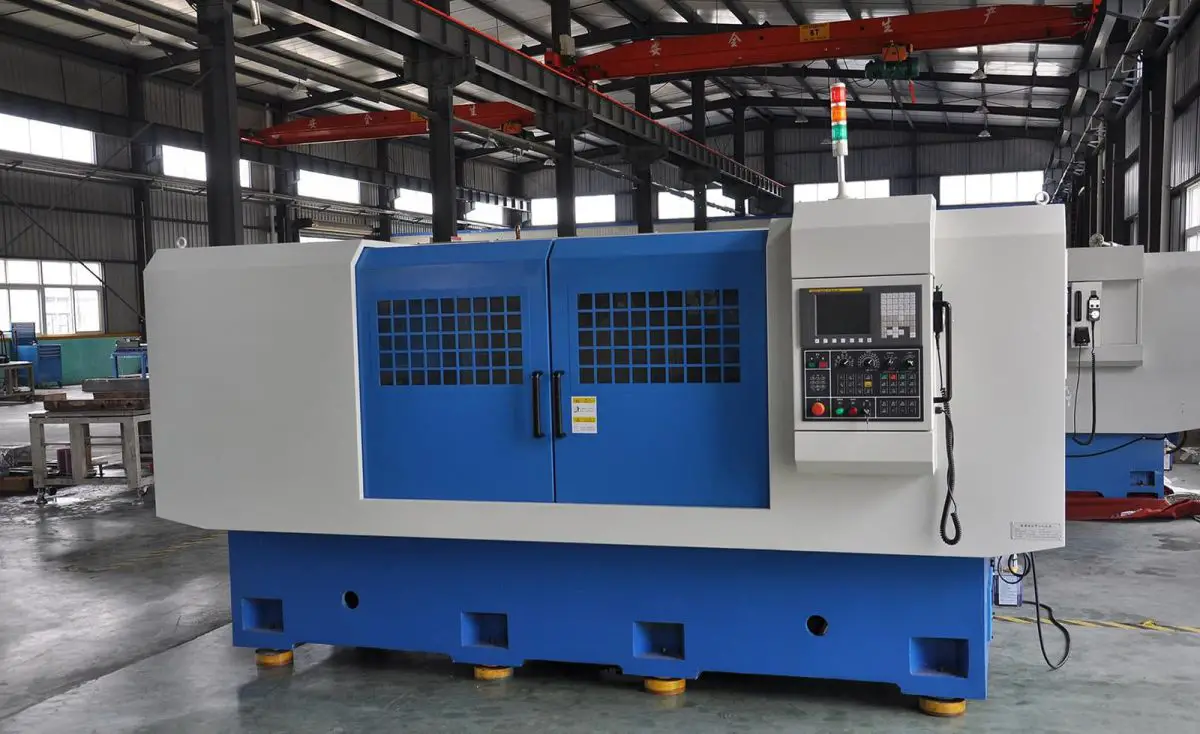
There are many types of CNC machine tools, but any type of CNC machine tool is made up of several basic components, including control medium, numerical control system, servo system, auxiliary control system and machine tool body, as shown in Figure 1-1.

(1) Control media
When the numerical control system works, it does not require operators to directly manipulate the machine tool, but the machine tool must execute the operator's intentions. This requires establishing some type of connection between the operator and the machine tool. The intermediate means of this connection is called the control means. The control means stores all operational information necessary for processing the part and the relative displacement information between the tool and the part.
Therefore, the control medium is the information carrier that transmits the part processing information to the numerical control device. There are several forms of control means, which differ depending on the type of numerical control device used. The most common include punched paper tape, punched card, magnetic tape, floppy disk, and USB interface media.
The processing information recorded in the control medium needs to be transmitted to the numerical control device via the input device. Common input devices include photoelectric paper tape input machines, magnetic tape recorders, floppy disk drives, and USB interfaces.
In addition to the above control media, some CNC machine tools use digital displays, digital plugs, or enter programs and data directly using a keyboard. In addition, with the development of CAD/CAM technology, some numerical control equipment uses CAD/CAM software to program on other computers, and then communicates with the numerical control system (such as a LAN) to directly transmit the program and the data for the numerical control device.
(2) Numerical Control System
Numerical control device is a control system and the central link of CNC machine tools. It can automatically read the numbers given in the input medium and decode them to feed the machine tool and machine parts. A numerical control system generally consists of four parts: input device, controller, arithmetic unit, and output device, as shown in Figure 1-2.
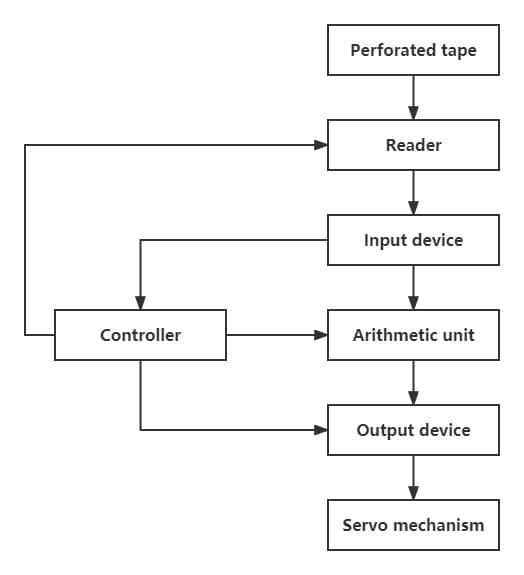
The input device receives the code issued by the punched tape reader and, after identification and decoding, inserts it into the corresponding registers. These instructions and data will serve as raw data for control and operation.
The controller receives instructions from the input device and controls the arithmetic unit and input device according to the instructions to perform various operations on the machine tool (such as controlling the movement of the work table along a certain coordinate axis, controlling spindle speed and coolant switch, etc.), as well as controlling the working cycle of the entire machine (such as controlling the start or stop of the reader, controlling the operation of the arithmetic unit and controlling the output signals, etc.) .
The arithmetic unit receives instructions from the controller, performs certain calculations on the data sent by the input device, and continuously sends the calculation results to the output device to make the servo system perform the required movement.
For the contour control system that processes complex parts, an important function of the arithmetic unit is interpolation. Interpolation means that the coordinate data of a start and end point on the part contour of each segment of the program are sent to the arithmetic unit, and after calculation, “data densification” is performed between the start point and the end point , and the calculation results are sent to the output device according to the controller's instructions.
The output device sends the calculation results of the arithmetic unit to the servo system according to the instructions of the controller, drives the corresponding coordinate axis through power amplification, and makes the machine tool complete the relative movement of the tool and the workpiece.
Currently, microcomputers are used as numerical control devices. The microcomputer's central processing unit (CPU), also known as microprocessor, is a large-scale integrated circuit. It integrates the arithmetic unit and controller into a single integrated circuit chip. In the microcomputer, the input and output circuits use large-scale integrated circuits, called I/O interfaces. The microcomputer has large capacity registers and uses high-density storage media such as semiconductor memory and disk memory.
Memory can be divided into two types: read-only memory (ROM) and random access memory (RAM). The former is used to store the system control program, and the latter stores the work parameters during system operation or the user's parts processing program. The working principle of the microcomputer numerical control device is the same as the above hardware numerical control device, except that the former uses general hardware, and different functions are achieved by changing the software, making it more flexible and economical.
(3) Servo System
The servo system consists of a servo drive motor and a servo drive device, and is the executive part of the numerical control system. The servo system receives instruction information from the numerical control system and moves the moving parts of the machine tool or performs actions of the running part according to the requirements of the instruction information.
To process parts that meet required specifications. The instruction information is reflected in the pulse information, and the displacement caused by each pulse on the moving parts of the machine tool is called the pulse equivalent. The pulse equivalents generally used in mechanical processing are 0.01mm/pulse, 0.005mm/pulse and 0.001mm/pulse, and the current pulse equivalent used in numerical control systems is generally 0.001mm/pulse.
The servo system is a key component of the CNC machine tool, and its quality directly affects the speed, position, accuracy, etc. The drive devices commonly used in servomechanism vary depending on the type of numerical control system. In open-loop control systems, stepper motors and electro-hydraulic pulse motors are commonly used in servomechanisms; Closed-loop systems use adjustable-speed DC motors and electro-hydraulic servo drive devices, etc.
(4) Auxiliary Control System
The auxiliary control system is a strong electrical control device between the numerical control device and the mechanical and hydraulic components of the machine tool. It receives instruction signals such as main movement speed change, tool selection change and auxiliary device action output by the numerical control device, and after necessary compilation, logical judgment and power amplification, it directly drives the corresponding electrical ones, hydraulic, pneumatic and mechanical components to complete various prescribed actions. In addition, some switching signals are transmitted to the numerical control device for processing through the auxiliary control system.
(5) Machine tool body
The machine tool body is the main part of the CNC machine tool, consisting of the machine tool base components (such as base and base) and various moving parts (such as work table, saddle, spindle, etc.). It is the mechanical part that completes various cutting processes and is an improvement based on conventional machine tools. It has the following characteristics:
CNC machine tools adopt high-performance spindles and servo drive systems as well as mechanical transmission devices.
The mechanical structure of the CNC machine tool has high rigidity, damping precision and wear resistance.
More efficient transmission components such as ball screw pairs and linear bearing guides are used.
Compared with traditional manual machine tools, CNC machine tools have undergone many changes in external appearance, overall layout, component structure of transmission systems and tools, and operating mechanisms. The purpose of these changes is to meet the requirements of CNC machine tools and fully utilize their characteristics. Therefore, it is necessary to establish new concepts for the design of CNC machine tools.
How CNC machines work
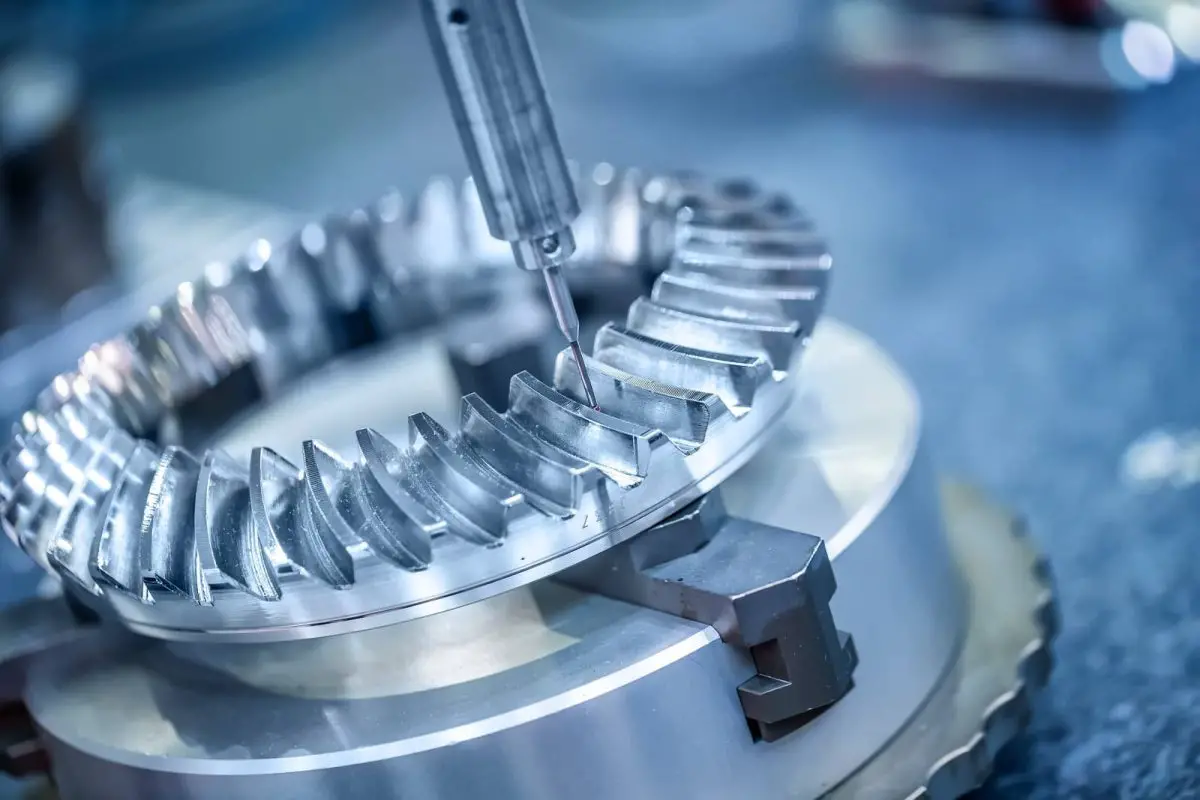
Compared to conventional machine tools, the difference in the working principle of CNC machine tools lies in the fact that they are processed according to instructions provided in digital format. Typically, it requires the following steps:
(1) Based on the standard and technical conditions of the part drawing, write the part machining program and record it on the control medium or conveyor;
(2) Insert the program into the program holder on the computer numerical control device through the input device;
(3) The computerized numerical control device processes the input program through calculation and sends instruction signals to the servo system and auxiliary control device of each coordinate through the output device;
(4) The servo system amplifies the received instruction signals, drives the moving parts of the machine tool, and the auxiliary control device controls the operation of the spindle motor according to the instruction signals;
(5) The tool and workpiece are driven to move relative to each other through the mechanical components of the machine tool to produce a workpiece that meets the requirements of the standard;
(6) Position detection feedback system detects the movement of the machine tool and feeds the signal back to the numerical control device to reduce machining errors.
Obviously, for open-loop machine tools, there is no detection and feedback system.
Advantages of CNC machining
Compared with conventional machine tools, CNC machine tools are highly efficient and automated electromechanical integrated machine tools that have the following processing characteristics:
(1) Wide adaptability and high flexibility:
CNC machine tools can be reprogrammed and inserted to process different objects. In some cases, only part of the program needs to be modified or special instructions used (such as using the zoom function instruction to process parts of the same shape but different sizes). This provides great convenience for the production of single parts, small batches, multiple varieties, product transformation and trial production of new products, significantly shortening the production preparation and trial production cycle.
(2) High machining precision and stable quality:
Due to the use of a digital servo system, the CNC device generates a corresponding displacement amount (called pulse equivalent) of the machine tool for each output pulse, which can reach 0.1 ~ 1 μm. The transmission screw of the machine tool adopts intermittent compensation, and the pitch error and transmission error can be controlled by a closed-loop system, so that the CNC machine tool can achieve high machining accuracy.
For example, in precision machining centers, the positioning accuracy is generally up to an error of (0.005 ~ 0.008) mm per 300 mm length, and the repeatability accuracy can reach 0.001 mm. Furthermore, the CNC machine tool has good structural rigidity and thermal stability, ensuring manufacturing precision. Its automatic processing method avoids human operation errors, ensures stable machining quality and has a high pass rate. The CNC machine tool can achieve multi-axis linkage and process complex surfaces that are difficult or impossible to process on conventional machine tools.
(3) High productivity:
The CNC machine tool can select the most favorable processing parameters to realize continuous processing of various processes. You can also get supervision of multiple machines. Due to the adoption of acceleration and deceleration measures, the moving parts of the machine tool can move and position quickly, greatly saving idle time during the processing process.
(4) Good economic efficiency:
Although the equipment cost of CNC machine tools (including depreciation costs, maintenance costs, energy consumption costs, etc.) per part is relatively high, its high production efficiency saves auxiliary time (such as wire drawing, machine adjustment , processing inspection, etc.) and reduces direct production costs for single-part and small-batch production. The stable machining precision of CNC machine tools reduces the scrap rate and further reduces production costs.
Applications and Industries
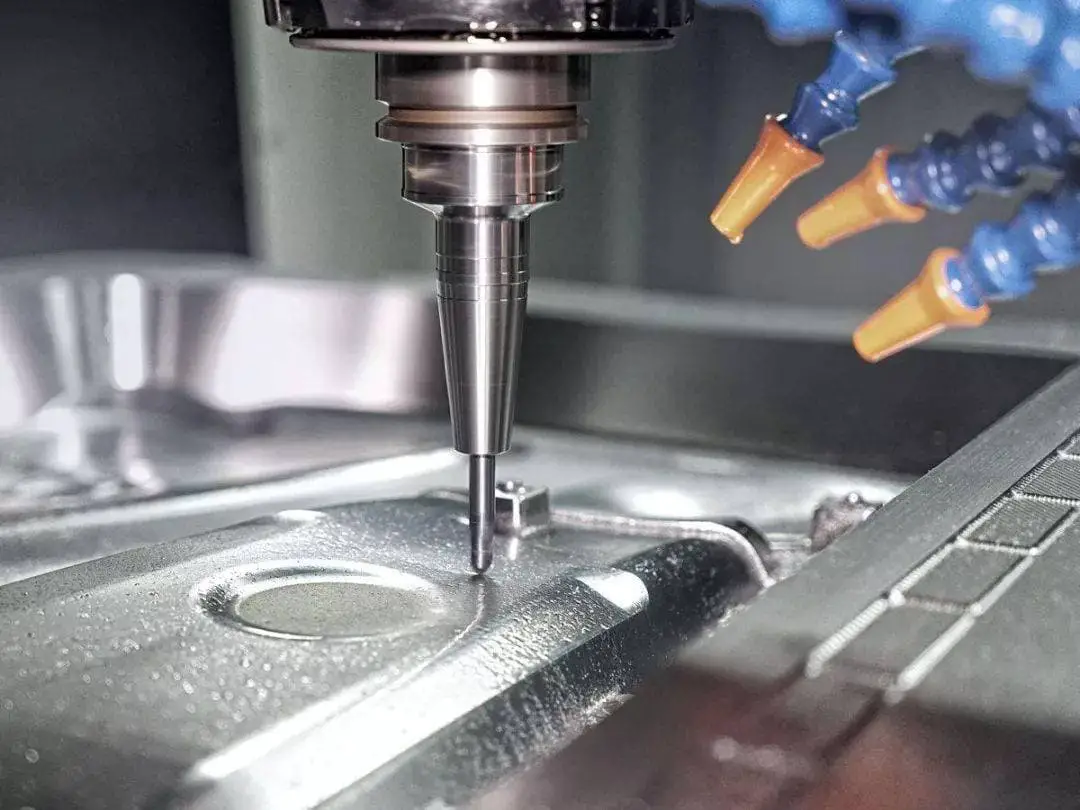
The performance characteristics of CNC machine tools determine their scope of application. For CNC machining, the objects to be machined can be divided into three categories according to their suitability.
(1) The most suitable category:
Parts with high machining precision requirements, complex shapes and structures, especially those with complex curves, curved surface contours or parts with non-smooth internal cavities. These parts are difficult to process on conventional machine tools and are difficult to detect and ensure quality. Parts that require milling, drilling, milling, grooving or threading in a single fixture.
(2) Relatively suitable category:
Expensive parts that are difficult to obtain and cannot be discarded. When machining these parts on conventional machine tools, there are certain difficulties and they are easily affected by various factors such as machine tool adjustment, operator's mental state and working conditions, which may result in defective or scrapped products. . .
Therefore, CNC machine tools can be chosen for reliable machining. They are used for parts that have low production efficiency and high labor intensity when processed on general-purpose machine tools, and for parts that require good consistency in size comparison or performance testing, and for parts produced in small batches of multiple varieties and specifications.
(3) Unsuitable category:
Parts that require approximate reference positioning using blanks for processing or require manual adjustment for positioning. Parts with unstable machining tolerances when there is no online detection system on the CNC machine tool that can automatically detect and adjust the position coordinate of the part. Parts that require specific process equipment or that are processed based on samples or prototypes, and parts that require mass production.
As the performance, functionality and cost of CNC machine tools continue to improve, along with the continuous improvement and upgrade of CNC machining tools and auxiliary tools, the use of CNC machine tools for mass production is increasing gradually. Therefore, suitability is relative and will change with technological development.
Future Trends in CNC Machines
From the perspective of the technological level of CNC machine tools, high precision, high speed, high flexibility, multifunctionality and high automation are important development trends of CNC machine tools. For a single machine, not only is it necessary to improve its flexibility and automation level, but it is also necessary to have the adaptability of higher-level flexible production systems and integrated computer systems.
The spindle speed of CNC equipment produced domestically in China has reached 10,000-40,000 r/min, and the feed speed has reached 30-60 m/min. The tool changing time is less than 2.0 seconds and the surface roughness Ra is less than 0.008 μm.
In terms of CNC systems, several well-known CNC device manufacturers in the world, such as FANUC in Japan, Siemens in Germany and AB in the United States, are currently developing serialization, modularization, high performance and systematization.
All of its CNC systems use 16- and 32-bit microprocessors, standard buses, and software and hardware module structures. The memory capacity has been expanded to more than 1MB, the machine tool resolution can reach 0.1μm, the high-speed feeding speed can reach 100m/min, and up to 16 control axes can be used, using advanced electrical and mechanical technology.
In terms of drive systems, AC drive systems are developing rapidly. AC drives have evolved from analog to digital, and controllers composed mainly of operational amplifiers and other analog devices are being replaced by integrated digital components composed mainly of microprocessors, thus overcoming weaknesses such as zero drift and temperature drift.
Conclusion
As a working machine, machine tools have provided tools and manufacturing methods for the industrial revolution and modern industrial development over the years. In the future development of industry and the progress of human civilization, the support and promotion of CNC machine tools will still be indispensable.
Looking to the future, a new round of industrial revolution brings new challenges and opportunities for the development of CNC machine tools. The integration of advanced manufacturing technology with the new generation of information technology and artificial intelligence also provides technical support for technological innovation, product replacement and industrial upgrading of CNC machine tools.
CNC machine tools will advance towards high performance, multifunctionality, customization, intelligence and green technology, and adopt future quantum computing technology to provide more powerful, convenient and effective manufacturing tools for the new industrial revolution and the progress of civilization human.

